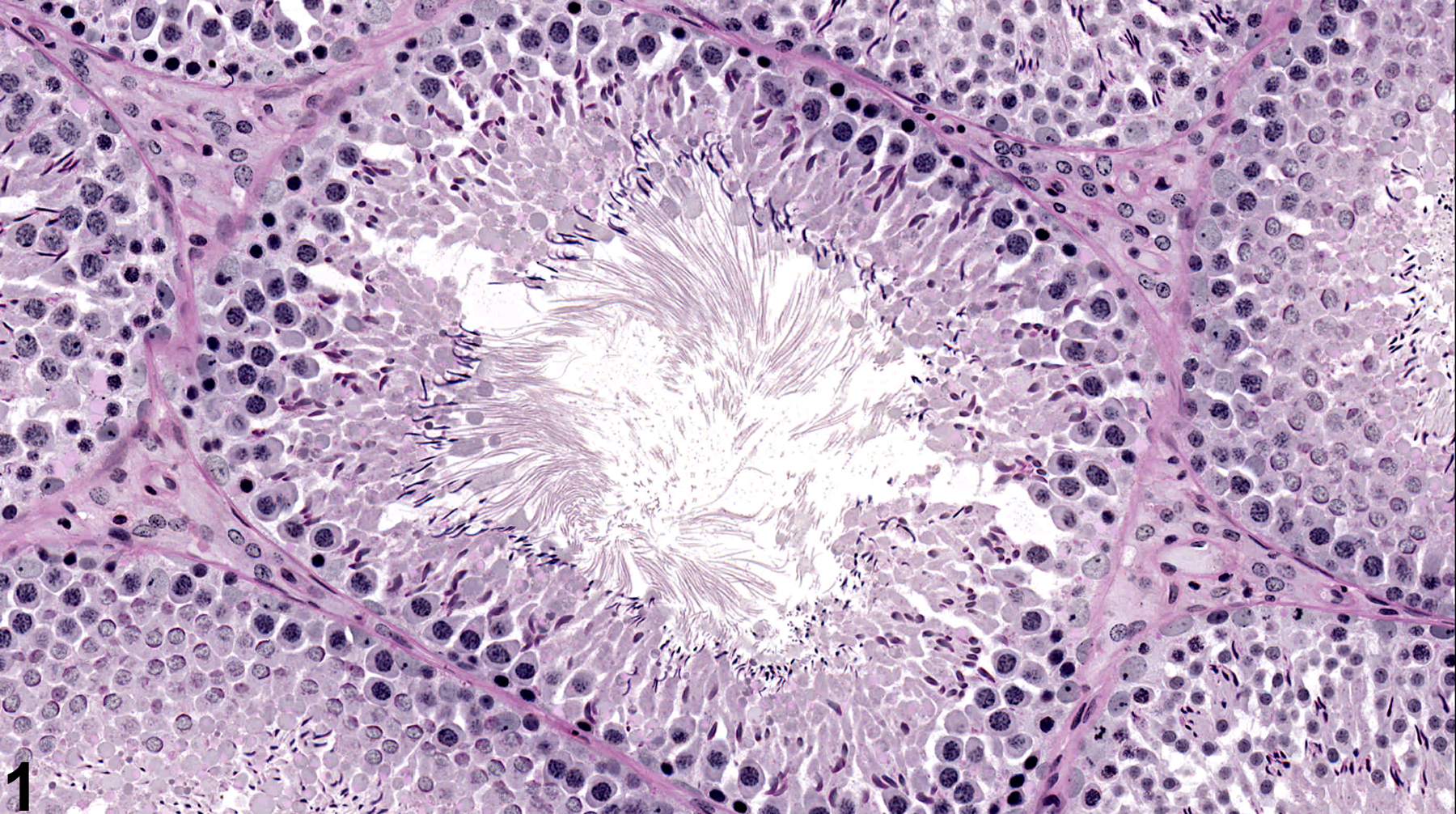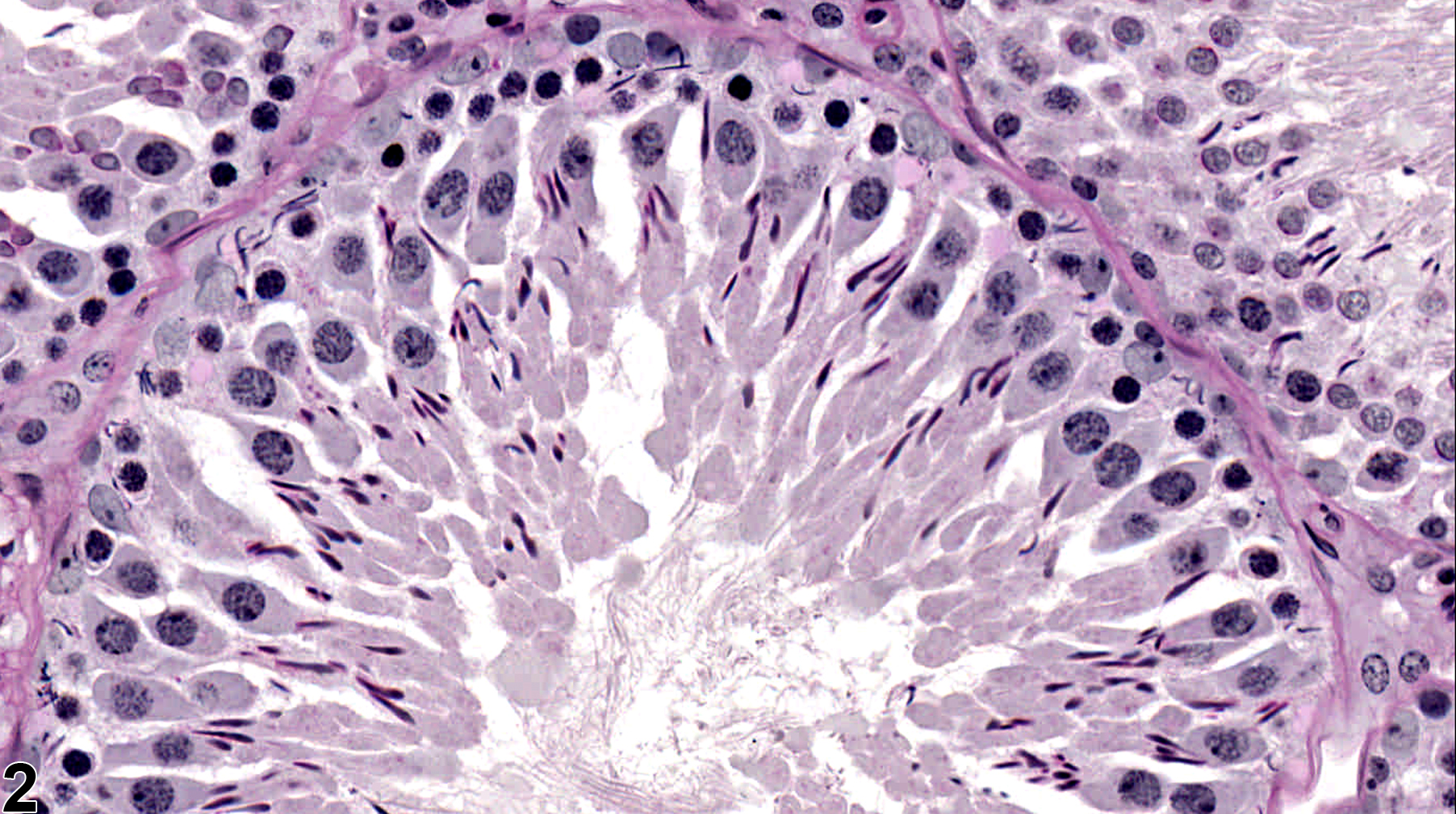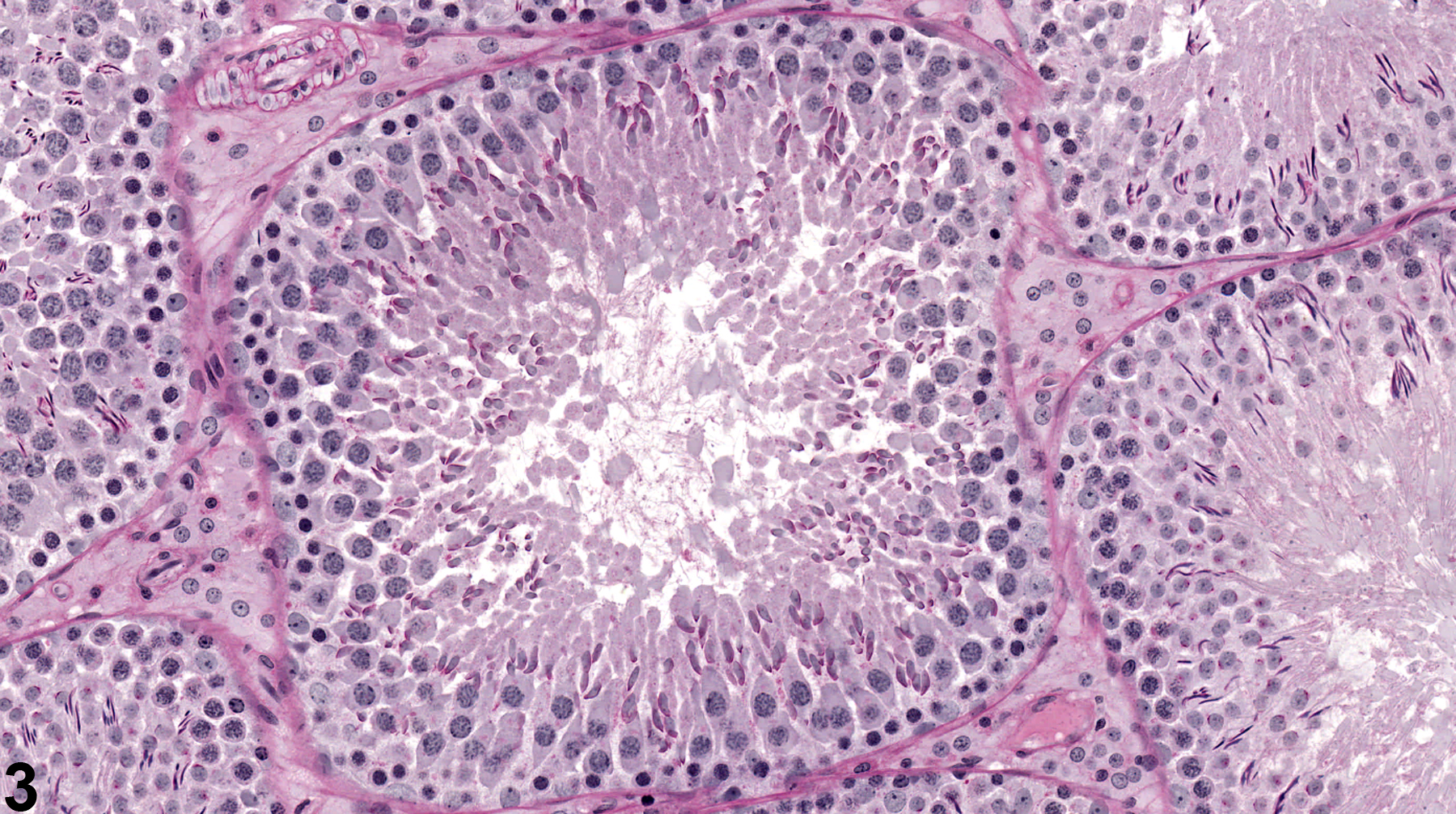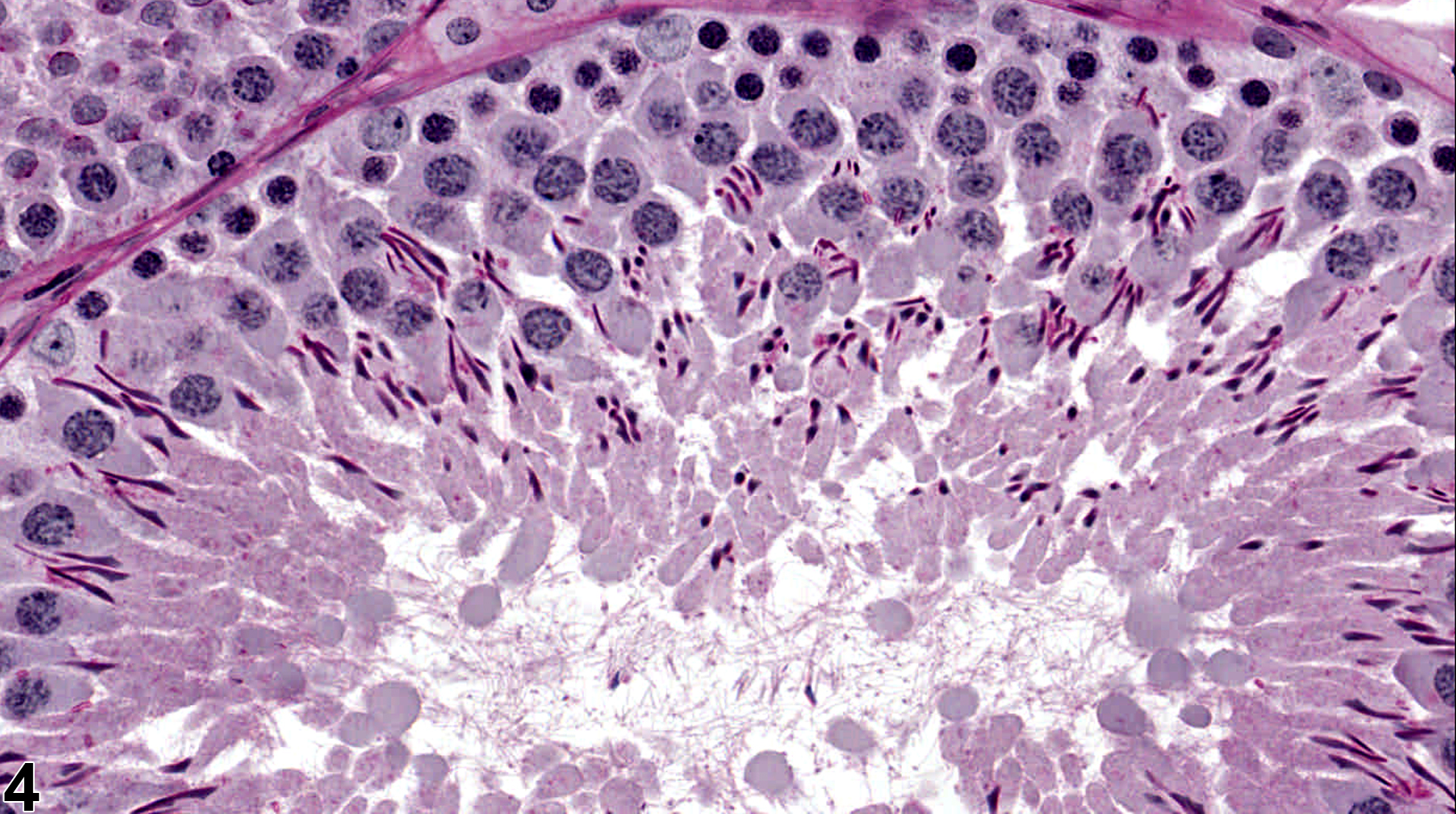Reproductive System, Male
Testis, Seminiferous Tubule - Retention, Spermatid
Narrative
Spermatid retention should be diagnosed and graded and should be discussed in the pathology narrative if the incidence and/or severity appears to be related to chemical administration. Bilateral involvement should be diagnosed when present.
Bryant BH, Yamasak I H, Sandrof MA, Boekelheide K. 2008. Spermatid head retention as a marker of 2,5-hexanedione-induced testicular toxicity in the rat. Toxicol Pathol 36:552-559.
Abstract: http://www.ncbi.nlm.nih.gov/pubmed/18467684Creasy DM. 2001. Pathogenesis of male reproductive toxicity. Toxicol Pathol 29:64-76.
Full Text: http://tpx.sagepub.com/content/29/1/64.full.pdfKu WW, Chapin RE, Wine RN, Gladen BC. 1993. Testicular toxicity of boric acid BA: Relationship of dose to lesion development and recovery in the F344 rat. Reprod Toxicol 7:305-319.
Abstract: http://www.ncbi.nlm.nih.gov/pubmed/8400621Linder RE, Klinefelter GR, Strader LF, Suarez JD, Roberts NL, Dyer CJ. 1994. Spermatotoxicity of dibromoacetic acid in rats after 14 daily exposures. Reprod Toxicol 8:251-259.
Abstract: http://www.ncbi.nlm.nih.gov/pubmed/8075514Linder RE, Klinefelter GR, Strader LF, Veermachaneni DNR, Roberts NL, Suarez JD. 1997. Histopathologic changes in testes of rats exposed to dibromoacetic acid. Reprod Toxicol 11:47-56.
Abstract: http://www.ncbi.nlm.nih.gov/pubmed/9138633
Testis, Seminiferous tubule - Retention, Spermatid in a male Sprague-Dawley rat. Retention of elongated spermatids is present in a stage XI seminiferous tubule. (Photograph courtesy of Dr. D. Creasy.)





